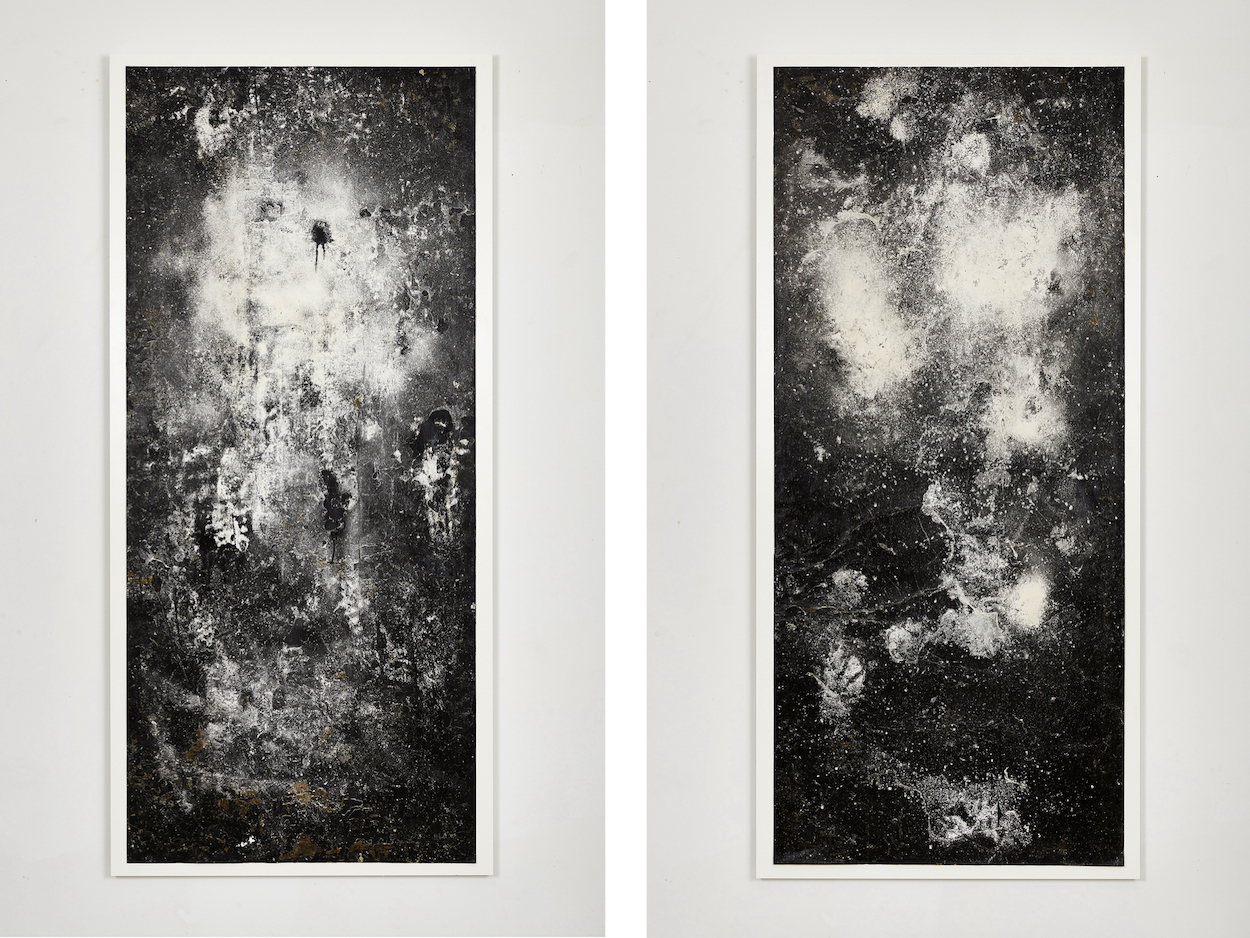Here, we ask an artist to frame the essential details behind one of their latest works.
Bio: Jeffrey Meris, 30, Brooklyn (@jeffreymeris)
Title of work: I, Used to Be XV (2021)
Where: Fragment Gallery at NADA Miami (Dec. 1–4).
Three words to describe it: Cosmic, trace, tactile.
What was on your mind at the time: I made a series of kinetic sculptures called “Now You See Me; Now You Don’t.” These works would kinetically pulverize casts of my body over perforated sheet metal. Eventually, I became more interested in the trace or the ephemera of the sculpture rather than the performance of the object or the material itself. I thought about how this action was akin to evidence of a crime scene or some sort of investigation. The drawings also visually drew upon imagery of the cosmic; I’m reminded of how minute my insecurities and even Western civilization are in the grander scheme of things.
An interesting feature that’s not immediately noticeable: I, Used to Be XV is mounted onto roofing paper, which has cultural significance to the people of the Bahamas, my home. Every hurricane season, the Bahamas is battered by these monstrous storms. At the end of a storm, roofs would be lifted from homes and asphalt roofing paper would be littered throughout the island. It’s always been a fragile material, which I always had interest in but transposing the architectural relationality of the roofing paper speaks to the fragility of my own lived experience.
How it reflects your practice as a whole: Currently, my practice oscillates between the relationship of racialized trauma and fostering spaces and generative practices of care. In I, Used to Be XV the work is produced through a somewhat violent mechanism, but the end product becomes a transcendence that escapes the confines of bodily politics.
One song that captures its essence: Holy by Jamila Woods.
